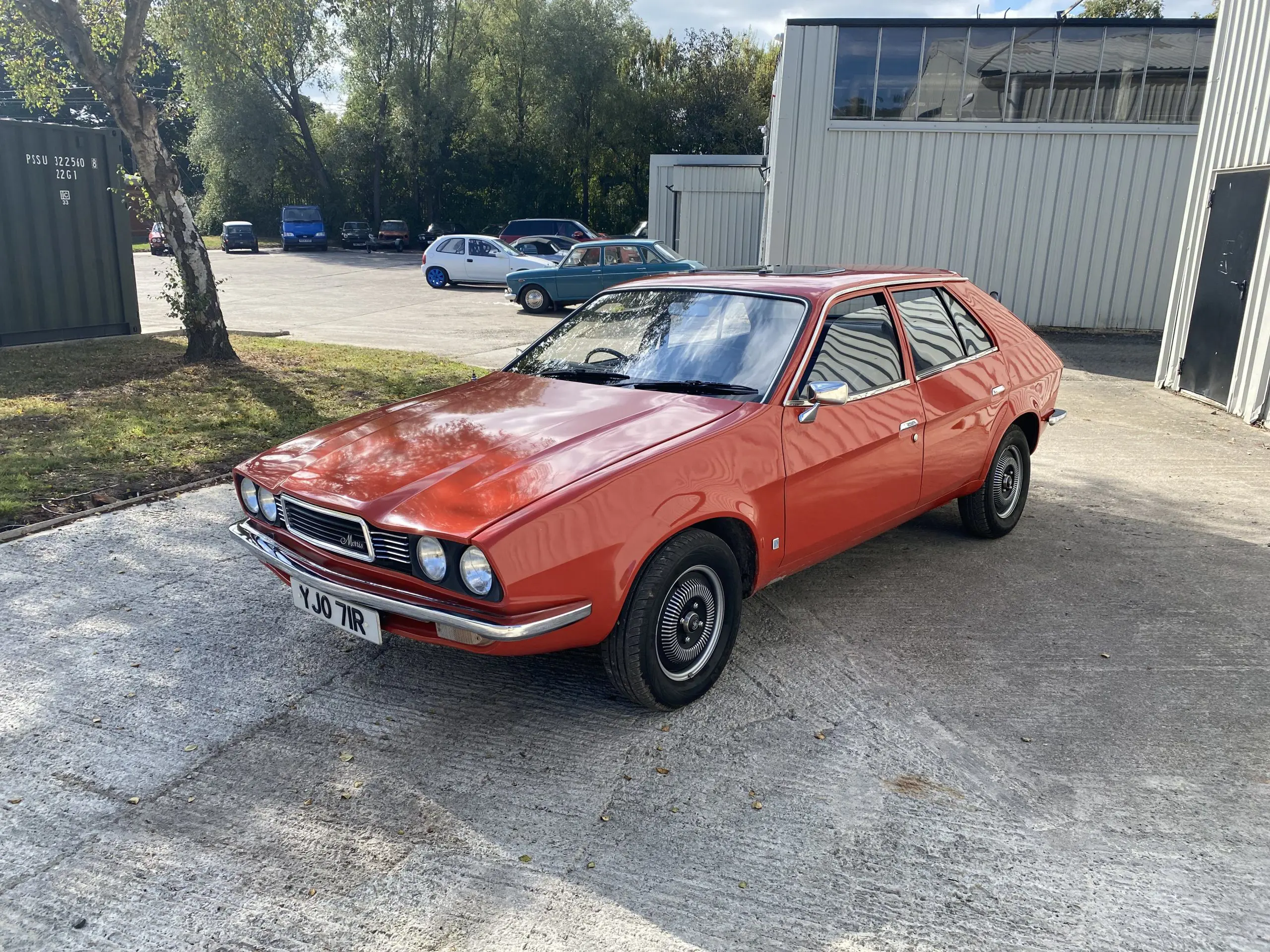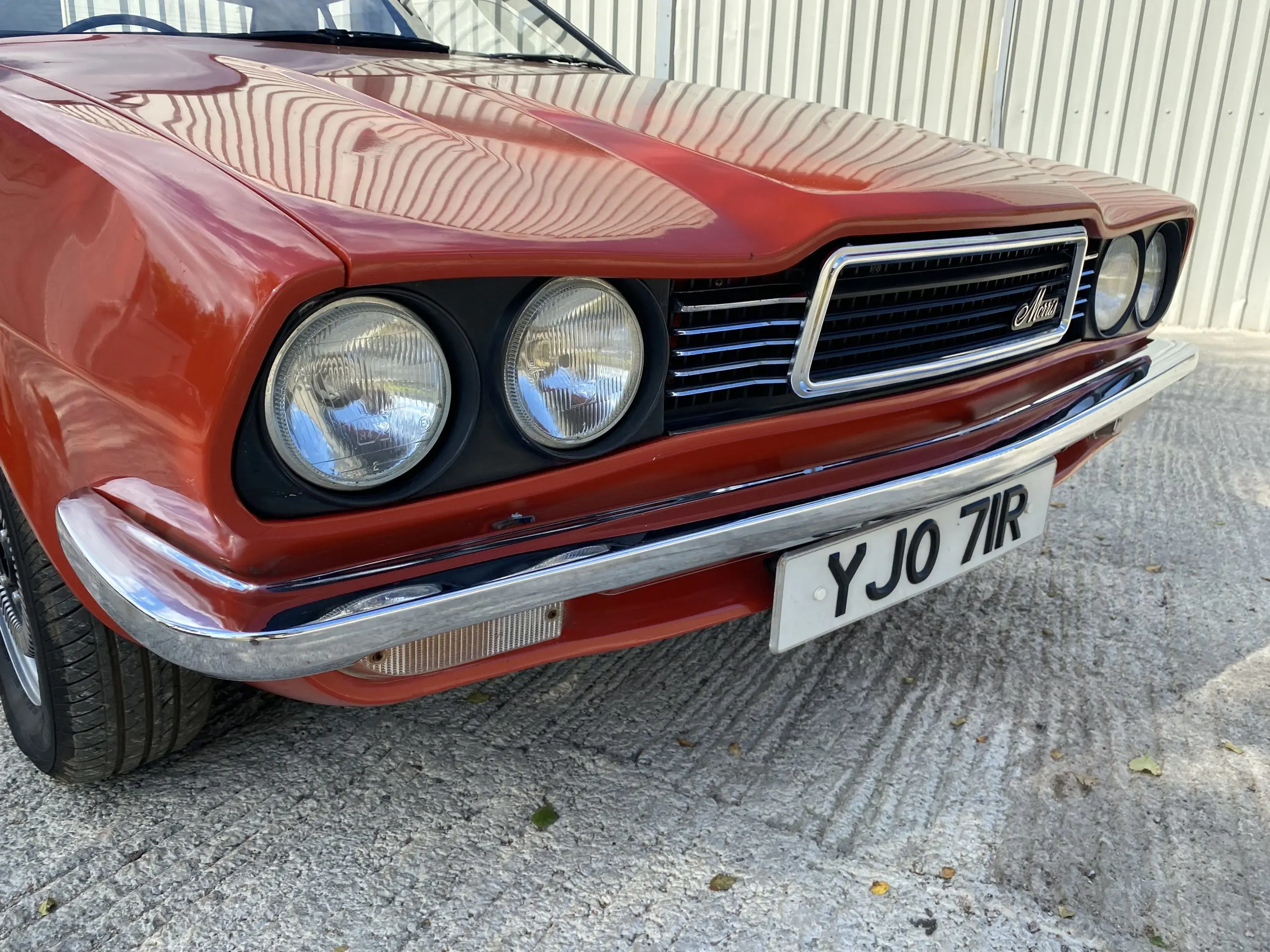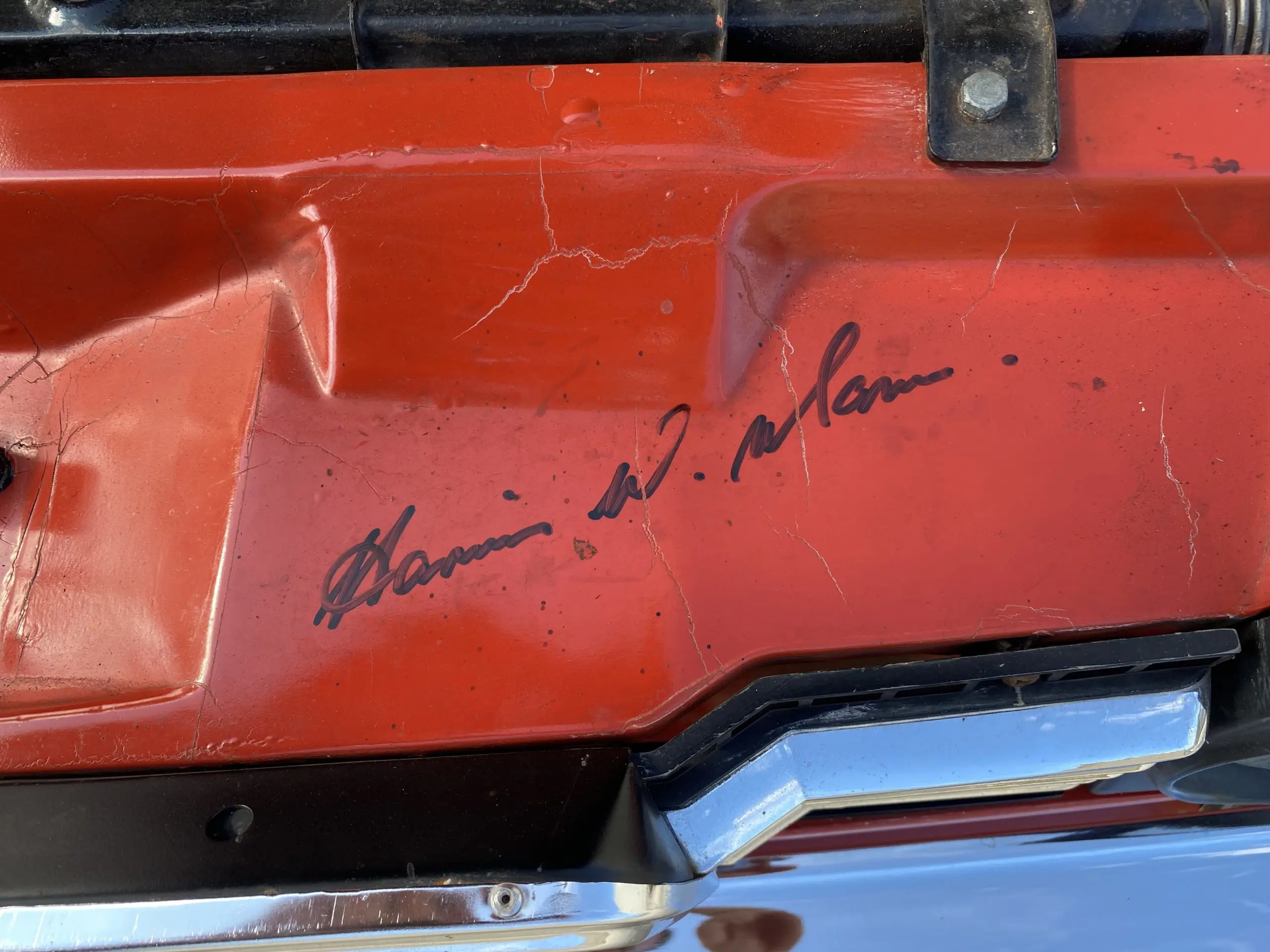THE WORLD’S RAREST WEDGE?
27 October 2021
W.B. and Sons Ltd. have a truly exclusive British car at its auction on the 4th of December 2021. Chassis Number 00099 is the first ‘Wedge’ made on the production line, and it was immediately despatched from Cowley to Longbridge to assess the production line’s build quality. Unfortunately, it got lost in the system but was eventually registered and sold in January 1977.
The British Leyland Motor Corporation began work on Project ADO71, the replacement for the ‘Landcrab’, in 1970. Harris Mann devised the elegant bodywork, although BLMC rejected a hatchback rear door. A company spokesman claimed that the Engineering Department was “encouraged to shy away from creating the car as a five-door model because it would have added extra weight and complexity, with only marginal improvements in accommodation. Market research for BLMC also indicated that a saloon was what customers wanted”.

In reality, Longbridge was probably afraid the ADO71 would have resulted in clashes with the Maxi. Power was from the four-cylinder 1.8-litre B series and the six-cylinder 2.2 litre E series, with suspension via Hydragas. BL staged the press launch for the new ‘18/22’ series on the 13th of February 1975, with the public launch on the 26th of March heralded by an elaborate television advertising campaign.
And so, imagine watching ITV one wet Wednesday evening. The commercial break provides welcome relief from the cast of Crossroads staggering around the motel set, and then the stentorian tones of Patrick Allen (who else?) bellow from the screen. Who could not be amazed by his announcement of “the biggest news since the Mini”.
Leyland originally badged the 18-22 as an Austin, a Morris or a Wolseley, as their dealership network was still not fully integrated. The Austins were recognisable by their trapezoidal-shaped headlamps and the Morris and Wolseley by a different shaped bonnet with quad lights. The Austin and Morris were available in ‘Basic’ or HL trim levels. The latter came with a voltmeter, clock, a rear folding armrest, a fuel cap lock and vinyl rear three-quarter panels for additional distinction. As for the Wolseley, it was the undoubted flagship of the range.

Autocar thought the 2200HL version would “find wide favour with both the business man seeking a refined, comfortable mile eater and the family man who needs proper space for a growing brood”. BL dispensed with the separate Austin, Morris and Wolseley names in September 1975, when they rebranded the line-up as ‘Princess’.
Twenty years later, the famous classic car writer Nick Larkin acquired a white Morris and asked the vendor to inform him of any other Wedges. Incredibly, they contacted him shortly afterwards with news of a Flamenco Red example in a somewhat dubious state of repair. So naturally, Mr. Larkin felt obliged to save it.

The Leyland Princess Enthusiasts’ Club revived the Wedge between 2014 and 2015, Dr. Martin Nancekievill remembering, “’Maurice the Morris’, YJO 71 R, was restored by us. It was a big job! It was the first Wedge down the production line; pilot production. Albeit not the oldest surviving as that is my Wolseley which was hand-built in a shed…”.
Today, the Wedge is a priceless example of British automotive heritage. To quote Harris Mann’s press interview of forty-six years ago, “We set out to build a new truly international car, not a scaled down American car, but a car that would have a distinctive flavour and would sell well in this country and Europe”.
With Thanks To: WB & Sons, Martin Nancekievill, Nick Larkin and Leyland Princess Enthusiasts’s Club.
Why choose Lancaster Insurance?
Here at Lancaster, we love classic cars as much as you do and we understand what it takes to protect them for future generations.
We have links with some of the top classic car clubs around the country and some of our policies even offer discounts of up to 25% for club members.
Other benefits of classic car insurance through Lancaster can include:
- Historic rally cover
- Static show cover
- Limited mileage discounts
- Choice of repairer
- 24-hour claims helpline
Give your classic the protection it deserves and get a quote for your classic car cover today.
